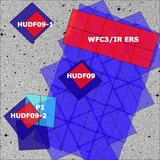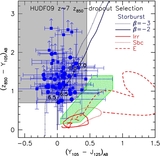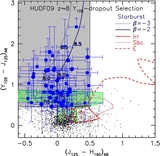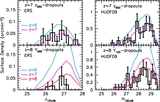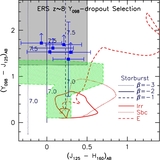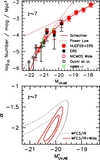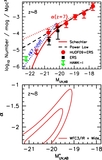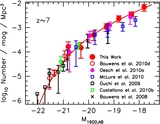Image Details
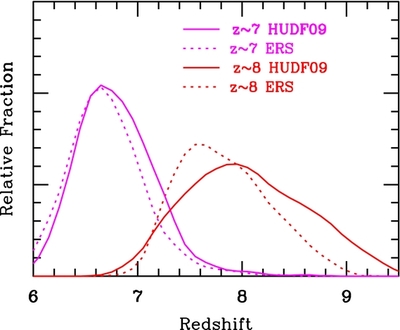
Caption: Figure 4.
Redshift distributions predicted for our z ~ 7 z 850-dropout (solid magenta lines) and z ~ 8 Y 105-dropout (solid red lines) selections over our ultra-deep HUDF09 fields (see Section 3.2). Also shown are the redshift distributions for our z ~ 7 z 850-dropout and z ~ 8 Y 098-dropout selections over the wide-area ERS fields (Section 3.4: dotted magenta and red lines, respectively). Different WFC3/IR Y-band filters are employed for the HUDF09 fields ( Y 105) and for the ERS search area ( Y 098); the J 125 and H 160 filters are the same. The selection criteria are carefully chosen to allow for a better match between the HUDF09 and ERS redshift selection windows. The result is that the redshift distributions are similar at z ~ 7 and z ~ 8. The mean redshift for our z 850-dropout selections is 6.8 and 6.7 for our HUDF09 and ERS selections, respectively. The mean redshift for our Y 105/ Y 098-dropout selections is 8.0 and 7.8 for our HUDF09 and ERS selections, respectively.
Copyright and Terms & Conditions
© 2011. The American Astronomical Society. All rights reserved.


